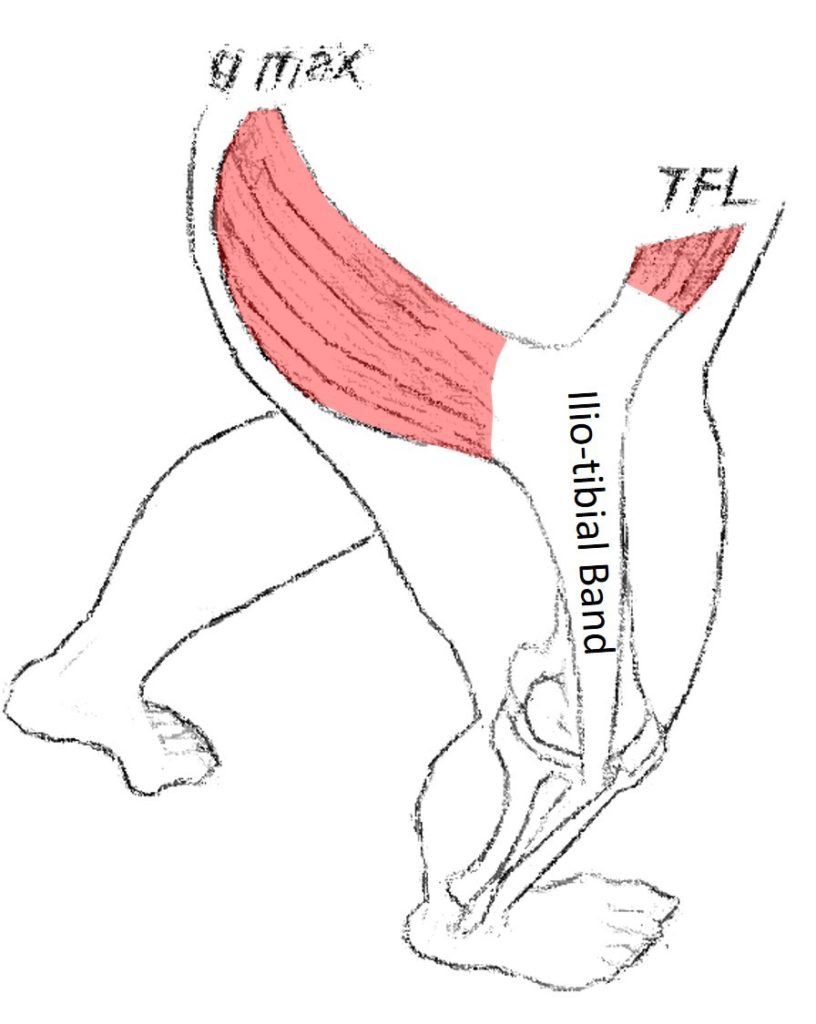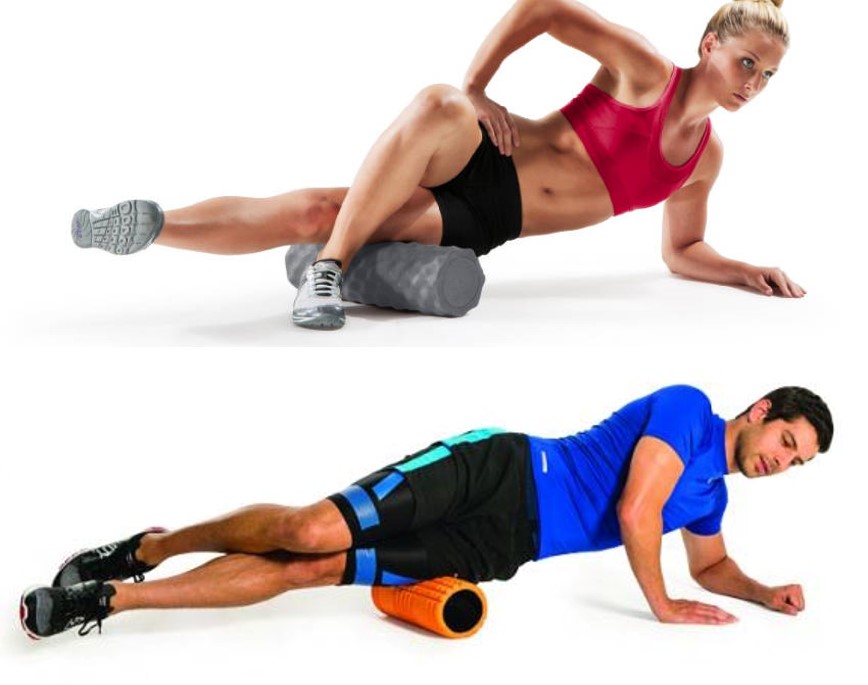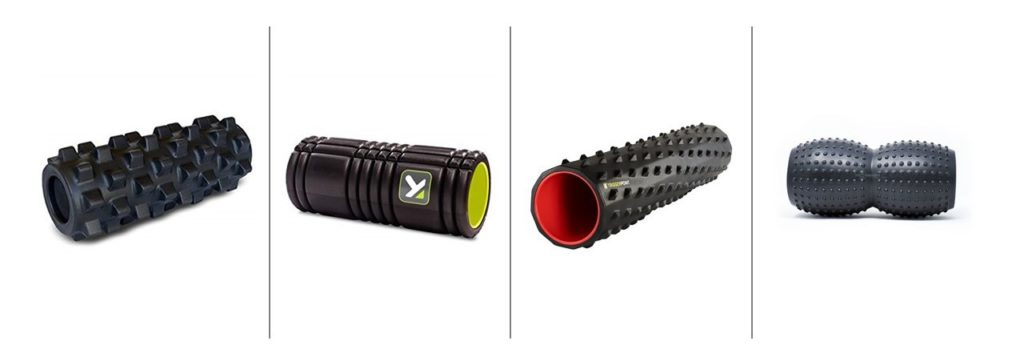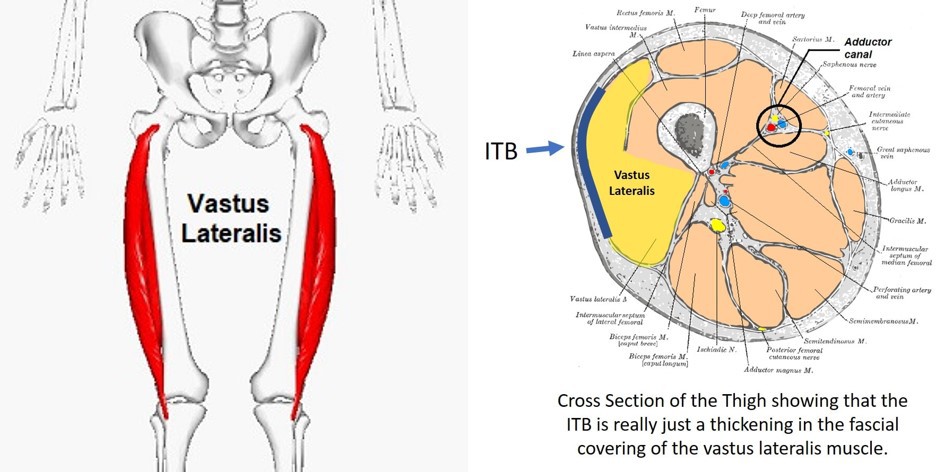If you’re an aging athlete, you have loads of trigger points and, therefore, vastus lateralis pain. You know what I mean, that small groan you release when you get up from a chair. One of the most problematic areas for all aging athletes is the ITB, yet most of us have no idea why this spot is always tight and that it has to do with a muscle called the vatus lateralis. Hence, today we’ll cover how I perform vastus lateralis trigger point release.
What Are These People Doing?
You see these people at the gym all the time. They’re in a sort of painful ecstasy as they “roll out” their ITB. In fact, if you’re an aging athlete your ITBs are likely plenty tight. You have the cross leg and the straight leg torture techniques:
Then you have the actual foam rollers, which include an embarrassingly quasi-carnal variety of devices:
So what are all of these people doing? Why are they using these torture devices? They are all performing vastus lateralis trigger point release. Let me explain.
The ITB and Vastus Lateralis Pain

The vastus lateralis is the outside part of the big thigh muscle called the quadriceps. The outer wall of the vastus lateralis muscle is, in fact, the ITB. Meaning that while we all call the ITB by a separate name, it’s really just a thickening of the outside of this thigh muscle.
To learn more about the ITB, see my video below:
Vastus Lateralis Trigger Point Release
So if you have tight ITBs that you like to roll out, you’re really just rolling out the trigger points in your vastus lateralis muscle. What’s a trigger point? This is an area in the muscle that doesn’t work well and is tight. It’s usually caused by irritated nerves in your back. Direct pressure on the spot can make it go away.
Since I’m often busy, I don’t mess around with just rolling my ITB with foam rollers, I use what I call “The Claw”:
This device is actually called “Roll Recovery” and it’s a spring-loaded device that rolls out both sides of your leg muscles at once. Here I’m not only rolling out my ITB/VL on the outside, but also my adductors on the other. If you place it the other way, you can roll out your quadriceps and your hamstrings. So you get a “twofer” in advanced trigger point release.
Realizing that Managing Trigger Points May Save your Joints
One of the key take-home points here is that your muscles protect your joints. Irritated nerves in your back can make those muscles laden with trigger points which can make the muscle dysfunctional. This means that it doesn’t contract efficiently and this can fry your joints over time.
Another common issue we see is that since the knee cap is directed in its grove by various quadriceps muscles including the vastus lateralis, problems in this muscle can cause knee cap pain. Meaning, trigger points here can pull the knee cap toward the outside which can cause rubbing between the knee cap and the groove. The pain can also be caused by trigger points themselves.
As an example from my life, after a full day of performing procedures in a heavy lead apron, my left leg will get many trigger points. I use “The Claw” to work those out before exercising for the day as that will allow those muscles to work better at protecting my joints. Meaning an ounce of prevention by getting rid of trigger points goes a long way.
The upshot? Taming trigger points in your ITB and vastus lateralis is a critical skill you should master. You can use the crazy foam rollers that vibrate or have draconian studs or you can use “The Claw”. Either way, getting rid of the trigger points – hence the vastus lateralis pain – in your legs before working out may just save your joints in the long run!




